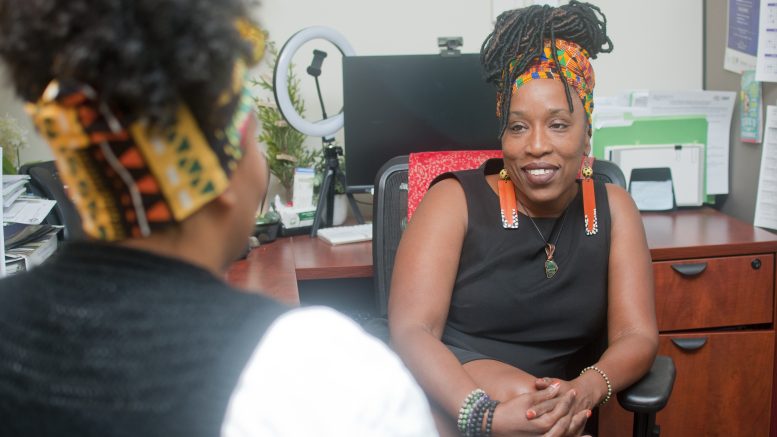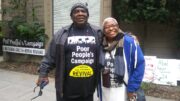Cultural Brokers help bridge the gap between two cultures – the African American/Black community and the child welfare system
LaDonna Lee is a Sacramento County Child Welfare Cultural Broker.
Since 2018, she has worked to bridge a critical gap between Sacramento Black families and the child welfare system. It’s working quite well for the families—and for Lee.
“I was built for this,” says Lee, the daughter of Black Panthers, the legendary socio-political activist group founded in the 1960s. “I was raised with a lot of cultural pride. I was built to be an advocate for Black families.”
The Sacramento County Cultural Broker Program aims to reduce the number of Blacks in the child welfare system in an effort to close the gap on both disproportionality and disparities: Data reflects that Black children enter foster care at four times the rate of non-Black children. For children who enter the system, cultural brokers work to get children placed with relatives instead of strangers and speed up reunification with their parents.
“The common things we do is show up and support parents who feel alone versus the system. They don’t have to feel like it’s just their word against a social worker.”
LaDonna Lee, Cultural Broker, Better Life Children Services
They’re called cultural brokers because they bridge two cultures: an African American community that might distrust monolith bureaucracies and the child welfare system.
“Child welfare is such a complex system,” says Cora Hardy, director of Better Life Children Services, a foster family and adoption non-profit. Better Life is one of three agencies in Sacramento County implementing Cultural Brokers. The other two are Sacramento Children’s Home and Rose Family Creative Empowerment Center. All three work closely with the Sacramento County Department of Child, Family and Adult Services.
Besides being disproportionately affected by risk factors, such as poverty, Blacks who’ve experienced institutional racism might distrust governmental programs. Cultural brokers seek to overcome such obstacles to build trust and improve outcomes.
And they have.
Lee is one of about 10 cultural brokers working for the three agencies involved in the program. They visit parents in their homes. They go to court hearings with them. They sit with them in meetings with social workers. And they do a lot of talking.
“It’s a lot of talking,” says Lee.
“The common things we do is show up and support parents who feel alone versus the system,” Lee says. “They don’t have to feel like it’s just their word against a social worker.”
She gets parents to talk, open up: “Otherwise, they shut down and can’t come up with a plan of action,” she says.
“When a social worker and police officer show up to take your children, it’s terrifying,” she says. “It’s scary. I tell them, this is traumatic. It’s going to take time, but you’ll get your family back together.”
There’s a real need for Lee’s passion in Sacramento County.
Prior to the start of the model, Black children (17 years and younger) accounted for 11 percent of the general population, but represented 18 percent of the population in poverty and 35 percent of the children in foster care, according to statistics from the program.
As of the first evaluative outcomes review, cases for 97 percent of families serviced were successfully closed, resulting in reunification with parents or other forms of permanency instead of languishing in the system.
Cultural brokers weren’t initially embraced when the program began in 2018, Lee says, but things have shifted.
“The first year or two, nobody knew what a cultural broker was,” says Lee. Now, when she contacts a family, she hears, “Oh, thank God.”
For Lee, her first case back in 2018 was the initial success she still cherishes. After losing two children to Sudden Instant Death Syndrome (SIDS), a mother spiraled into addiction and had her other children taken away.
In talking to her, Lee realized the best way to help her is to shift the focus away from her drug addiction and focus on her profound grief.
“I talked to her as a grieving mom. That helped her to break through with her therapist,” she says.
After eight months, she got her children back.
Lee knows she made a difference: the mother hasn’t come to the attention of the CPS broker model since.
For more information about the Sacramento County Child Welfare Cultural Broker program and the Sacramento County Department of Child, Family and Adult Services, visit https://dcfas.saccounty.gov.



























